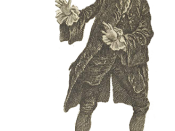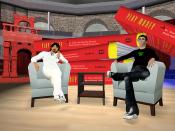Hamlet Brutal Truth
Disillusionment. Depression. Despair. These are the burning emotions
churning in young Hamlet's soul as he attempts to come to terms with his
father's death and his mother's incestuous, illicit marriage. While
Hamlet tries to pick up the pieces of his shattered idealism, he
consciously embarks on a quest to seek the truth hidden in Elsinore;
this, in stark contrast to Claudius' fervent attempts to obscure the
truth of murder. Deception versus truth; illusion versus reality. In the
play, Prince Hamlet is constantly having to differentiate amongst them.
However, there is always an exception to the rule, and in this case, the
exception lies in Act 2, Scene 2, where an "honest" conversation (sans
the gilded trappings of deceit) takes place between Hamlet and
Rosenkrantz and Guildenstern. Via the use of prose and figurative
language, Shakespeare utilizes the passage to illustrate Hamlet's view
of the cosmos and mankind.
Throughout the play, the themes of illusion and mendaciousness have
been carefully developed. The entire royal Danish court is ensnared in a
web of espionage, betrayal, and lies. Not a single man speaks his mind,
nor addresses his purpose clearly. As Polonius puts it so perfectly:
"And thus do we of wisdom and of reach^?
By indirections find directions out"
Act 2, Scene 2, Lines 71-3
The many falsehoods and deceptions uttered in Hamlet are expressed
through eloquent, formal, poetic language (iambic pentameter),
tantamount to an art form. If deceit is a painted, ornate subject then,
its foil of truth is simple and unvarnished. Accordingly, when the
pretenses of illusion are discarded in Act 2, Scene 2, the language is
written in direct prose.
Addressing Rosenkrantz and Guildenstern, Hamlet pleads with them to
deliver up honest speech about the intent of their arrival:
"[offer up] Anything but to...


